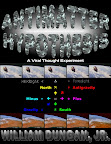“All for one, and one for all,” mights just as well be the motto of the Free Software Movement. The opportunity exists for an exponential payoff when implementing information technology during the Obama administration that will produce a lasting affect. The free software philosophy offers a third alternative to the traditional mix of public and private interests.
The drawbacks of a completely public effort are taxpayer expense, limited resources, and bureaucratic obstacles. The drawbacks of a completely private effort is pay for access, and a closed interface. Neither public nor private approaches provide a truly open interface. In the proprietary software sector software is treated as goods, not as a service. In the free software community software is treated as a service, not as goods. In the free software community programmers get paid by the job, as a service, but the software product becomes public domain. This allows free software to build upon itself, like public domain, peer review science.
By adopting public licenses government agencies can provide the data and interfaces while relying on the free software community to write software that interpret the data. Consumers of public data can range from think tanks and the media, to public agencies and private citizens, but the software must become public domain, so facts can be double checked. With free software, errors of interpretation can be exposed, and bugs fixed, as in public domain, peer review science. Then new software can build upon the old, introducing a multiplier effect and a model for public domain openness and efficiency.
Mortgage Crisis Solution
13 years ago









No comments:
Post a Comment